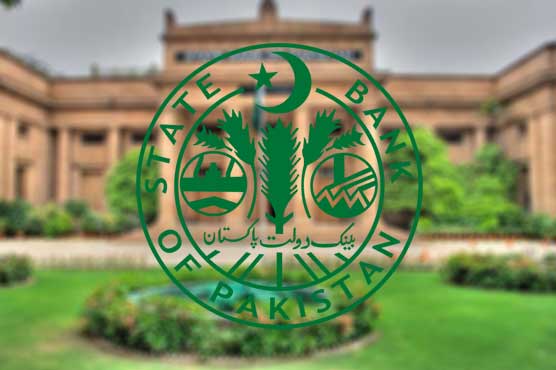SBP raises policy rate by 25 basis points to 7.25 percent

The SBP said year-on-year inflation fell from 9.7pc in June to 8.4pc in both July and August.
KARACHI (Dunya News) – State Bank of Pakistan (SBP) has decided to raise policy rate by 25 basis points to 7.25 percent.
The decision was taken by the Monetary Policy Committee (MPC) at its meeting on Monday.
The meeting noted that the pace of the economic recovery has exceeded expectations. This robust recovery in domestic demand, coupled with higher international commodity prices, is leading to a strong pick-up in imports and a rise in the current account deficit.
While year-on-year inflation has declined since June, rising demand pressures together with higher imported inflation could begin to manifest in inflation readings later in the fiscal year.
“The MPC was of the view that the priority of monetary policy also needed to gradually pivot from catalyzing the recovery after the Covid shock toward sustaining it,” the statement said.
This rebalancing would be best achieved by gradually tapering the significant monetary stimulus provided over the last 18 months, the MPC noted.
The MPC noted that the stance of monetary policy is still appropriately supportive of growth, with real interest rates remaining negative on a forward-looking basis. Looking ahead, in the absence of unforeseen circumstances, the MPC expects monetary policy to remain accommodative in the near term, with possible further gradual tapering of stimulus to achieve mildly positive real interest rates over time.
The meeting said that inflation fell from 9.7 percent (y/y) in June to 8.4 percent in both July and August. In addition to favorable base effects, this decline reflects continued deceleration in administered prices of energy due to the reduction in PDL and sales tax on petroleum products.
It said core inflation also fell in both urban and rural areas in August. Nevertheless, the momentum of prices remains relatively elevated, with month-on-month increases of 1.3 percent in July and 0.6 percent in August.
Real sector
With a supportive FY22 budget and accommodative monetary policy, most high-frequency domestic demand indicators such as automobiles, POL (petroleum, oil and lubricants) sales, cement sales and electricity generation continue to depict robust growth. This growth is mirrored in the strength of imports and tax collections. LSM registered strong growth in June (18.5 percent (y/y)) before moderating in August to 2.2 percent (y/y), in line with typical seasonal patterns.
External sector
The current account deficit rose to $0.8 billion in July and $1.5 billion in August, reflecting both vigorous domestic demand and high global commodity prices. While remittances remained strong, growing by 10.4 percent (y/y) during July-August and exports also performed reasonably well (averaging $2.3 billion per month), they were outstripped by imports. In response, the rupee depreciated by 4.1 percent since the last MPC meeting. The MPC noted that many other currencies have also depreciated recently as expectations of tapering by the Federal Reserve have been brought forward.
Fiscal sector
In FY21, prudent management of the public finances facilitated fiscal consolidation for the second year in a row despite Covid, with the primary deficit declining by around ½ percentage points to 1.4 percent of GDP. This improvement largely stemmed from strong growth in tax and petroleum development levy (PDL) revenues, together with significant deceleration in non-interest expenditures. Following the seasonal end-year release of expenditure allocations, the fiscal impulse was strongly expansionary in the final quarter of FY21.
Monetary and inflation outlook
The MPC noted that accommodative financial conditions have provided significant support to the growth recovery since the start of FY21. Following historic cuts in the policy rate and the introduction of SBP Covid-related support packages, private sector credit grew by more than 11 percent during FY21, on the back of consumer loans (mainly auto finance and personal loans) followed by a broad-based expansion in credit for fixed investment and finally working capital loans.


